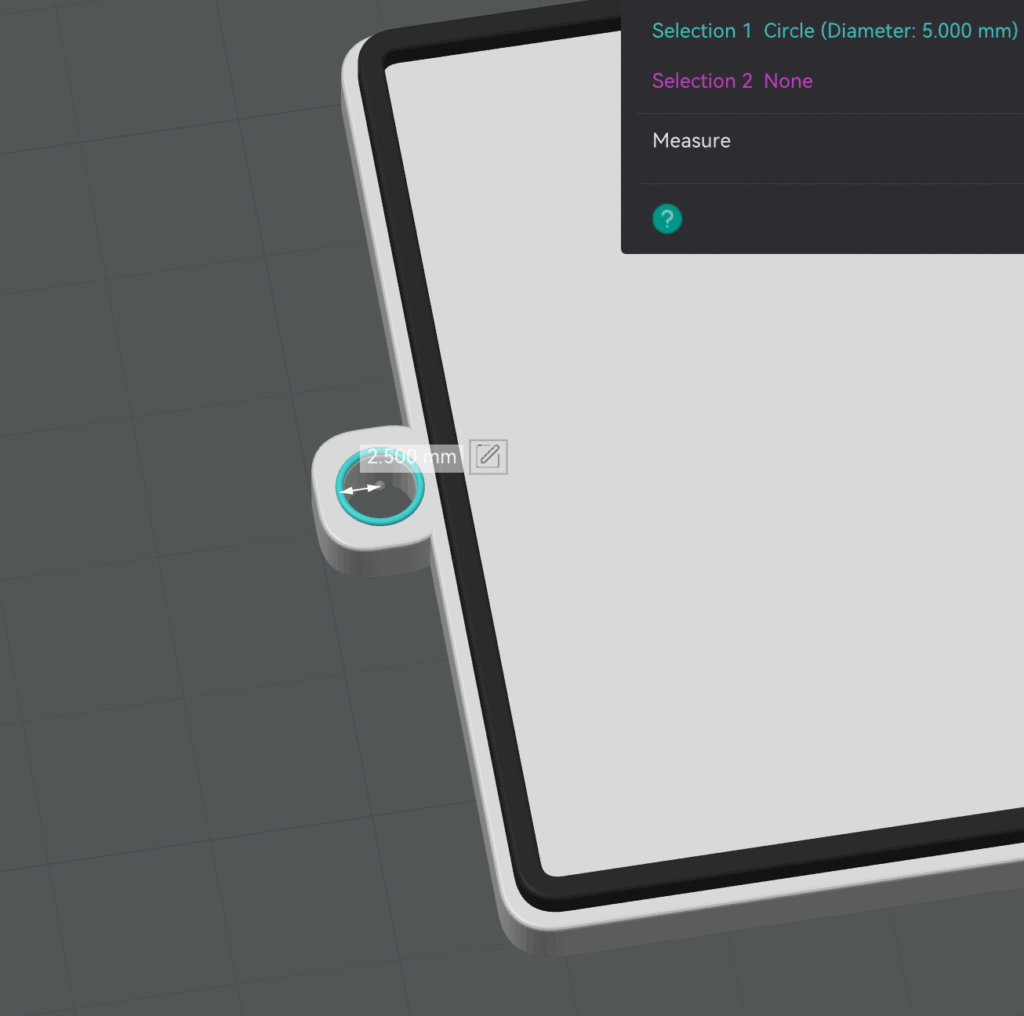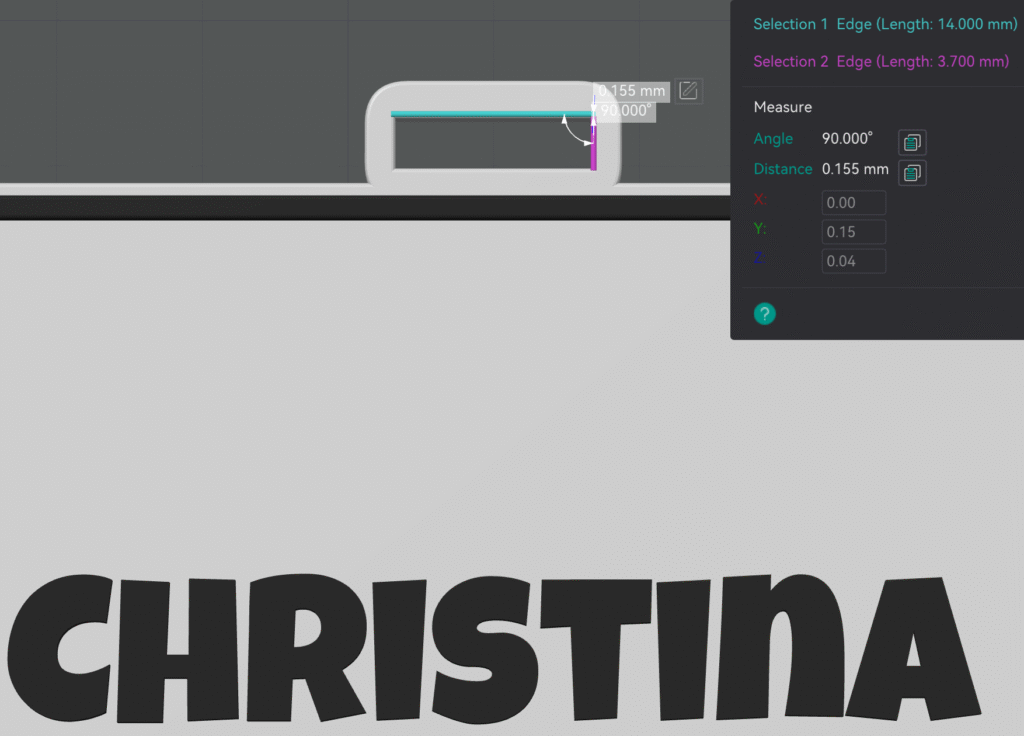If you want a tough, clean lanyard slot name tag STL (or a tag with a keychain hole), this guide gives you exact dimensions, print settings, and attachment options that actually fit. Use the free Custom 3D Name Tag Generator to add a 14 mm × 3.7 mm lanyard slot or a 5 mm keychain hole, export STL/3MF, and print—fast.
Disclosure: This article contains affiliate links. As an Amazon Associate, we may earn from qualifying purchases.
Hole vs. slot: which should you choose?
Choose the 14 × 3.7 mm lanyard slot when you want:
- A low-profile, snag-resistant connection (thin loops/cables slide through).
- Simple, twist-free alignment when worn on a lanyard or attached to bags.
Choose the 5 mm round hole when you want:
- Split rings, lobster/swivel hooks, or retractable reels.
- Quick swapping between keys, zippers, or belt-clips.

Rule of thumb:
- Fabric/loop/skinny cable → slot (≤ 3.7 mm thick pass-through).
- Rings/hooks/reels → 5 mm hole (often via a small split ring).
Exact sizes this post is based on
- Lanyard slot (rectangle with rounded ends): 14 mm (L) × 3.7 mm (W)
- Keychain hole (round): Ø 5 mm
These dimensions are built into the workflow below and work with the accessories linked here.

Strength & printability (quick specs)
- Material: PLA (stiff/easy) or PETG (tough). ASA for heat/sun.
- Tag thickness: 2.8–3.2 mm
- Perimeters: 3–4; add 1–2 mm internal fillet around slot/hole to reduce stress.
- Slicer (0.4 mm nozzle): 0.20 mm layers, 15–25% infill (grid/gyroid), 4–5 top/bottom.
- Orientation: Print face-up (letters to the sky); the slot bridges cleanly at 0.20 mm—no supports.
- Two-color option: Raise letters ≥ 0.8–1.2 mm, then use Pause at Height or export 3MF and assign per-body colors.
Make your tag in 60 seconds
- Open the Custom 3D Name Tag Generator.
- Enter your text; pick a bold, readable font (Anton, Bebas Neue, Luckiest Guy).
- Toggle Lanyard Slot (14×3.7 mm) or Keychain Hole (5 mm).
- (Optional) Add a border frame for extra pizzaz.
- Export STL (single color) or 3MF (separate bodies for multi-color).
- Slice & print (0.16-.28 mm layers, 2–4 perimeters). No supports needed for the slot/hole.
Accessories that match these sizes (affiliate)
The picks below were chosen to fit the 14×3.7 mm slot or work naturally with the 5 mm hole. Use them as drop-in attachments.
Works with the 14 × 3.7 mm slot (thread through the slot)
- Metal Badge Clips: Holds the name tag flat and provides an attachment for clipping directly to a shirt.
- 1.5 mm steel wire keychains (loop cables): Why it fits: 1.5 mm cable passes easily within the 3.7 mm slot height; twist-lock outside.
Works best with the 5 mm hole (via ring or direct clip)
- Small lobster/swivel clasps (for quick clip-on/off): Search results (small lobster/swivel clasp) Why it fits: The clasp hooks onto a small split ring that’s placed through the 5 mm hole, or directly onto small hardware attached at that hole.
- Retractable badge reels with carabiner (belt/waist clip): Search results (carabiner retractable badge reel) Why it fits: Most reels include a small split ring or clip that interfaces perfectly with a 5 mm hole.
Tip: If a clip’s body is too bulky to pass the 3.7 mm slot, just use a tiny split ring in the 5 mm hole and clip to that.
FAQ
Will my lanyard fit the 14×3.7 mm slot?
If the part passing through is ≤ 3.7 mm thick (e.g., 1.5–2.0 mm wire cable or thin cord), yes. Wider webbing or bulky clips should go on a split ring via the 5 mm hole.
Is PLA strong enough?
PLA or PLA+ works for everyday use. For outdoor heat or extra toughness, pick PETG (or ASA for UV/heat). But almost anywhere a human can be (while wearing a name tag) should work with regular PLA.
Generate your lanyard slot name tag STL (free)
👉 Start here: Custom 3D Name Tag Generator – STL/3MF
Add a 14×3.7 mm slot or 5 mm hole, export, slice, and print in minutes.
